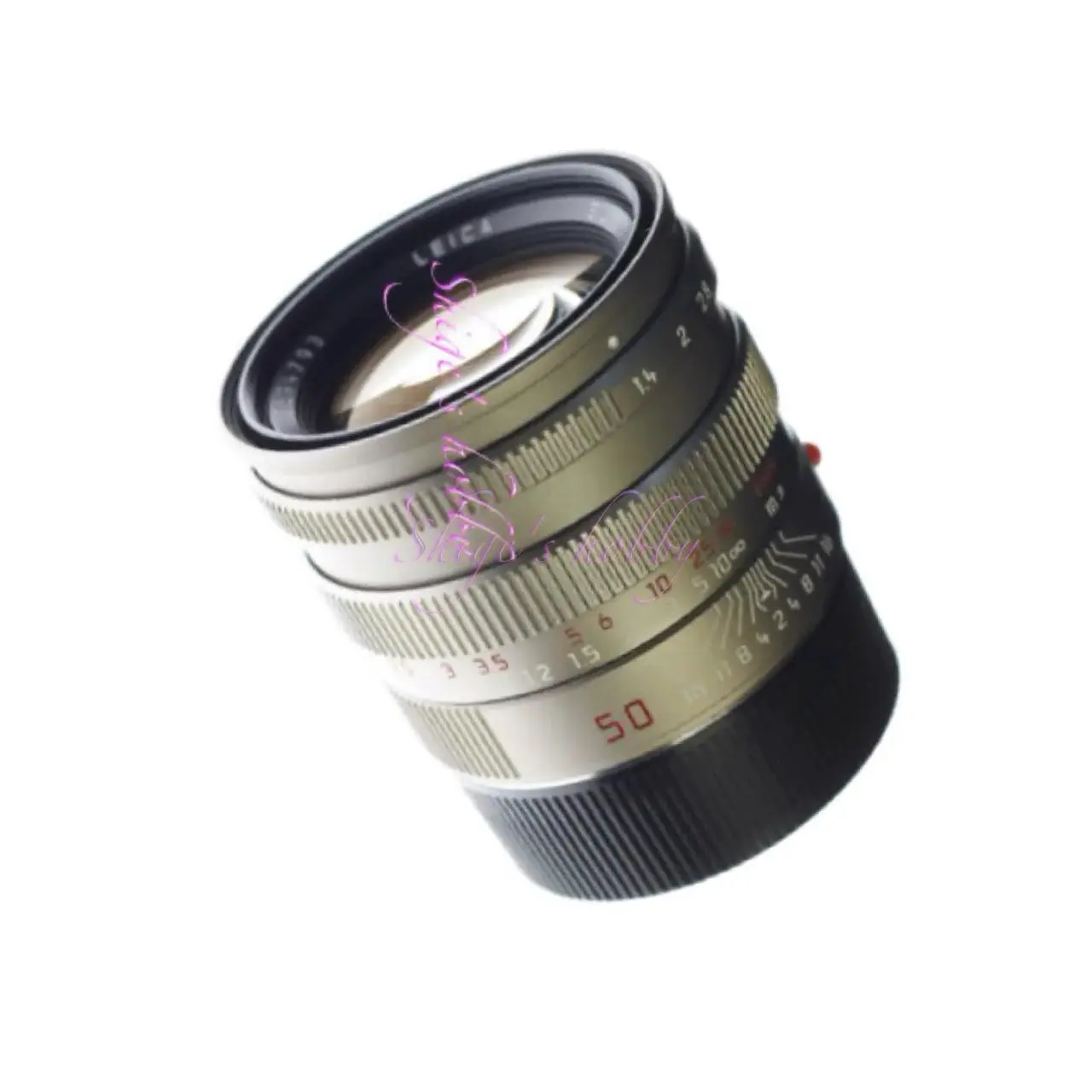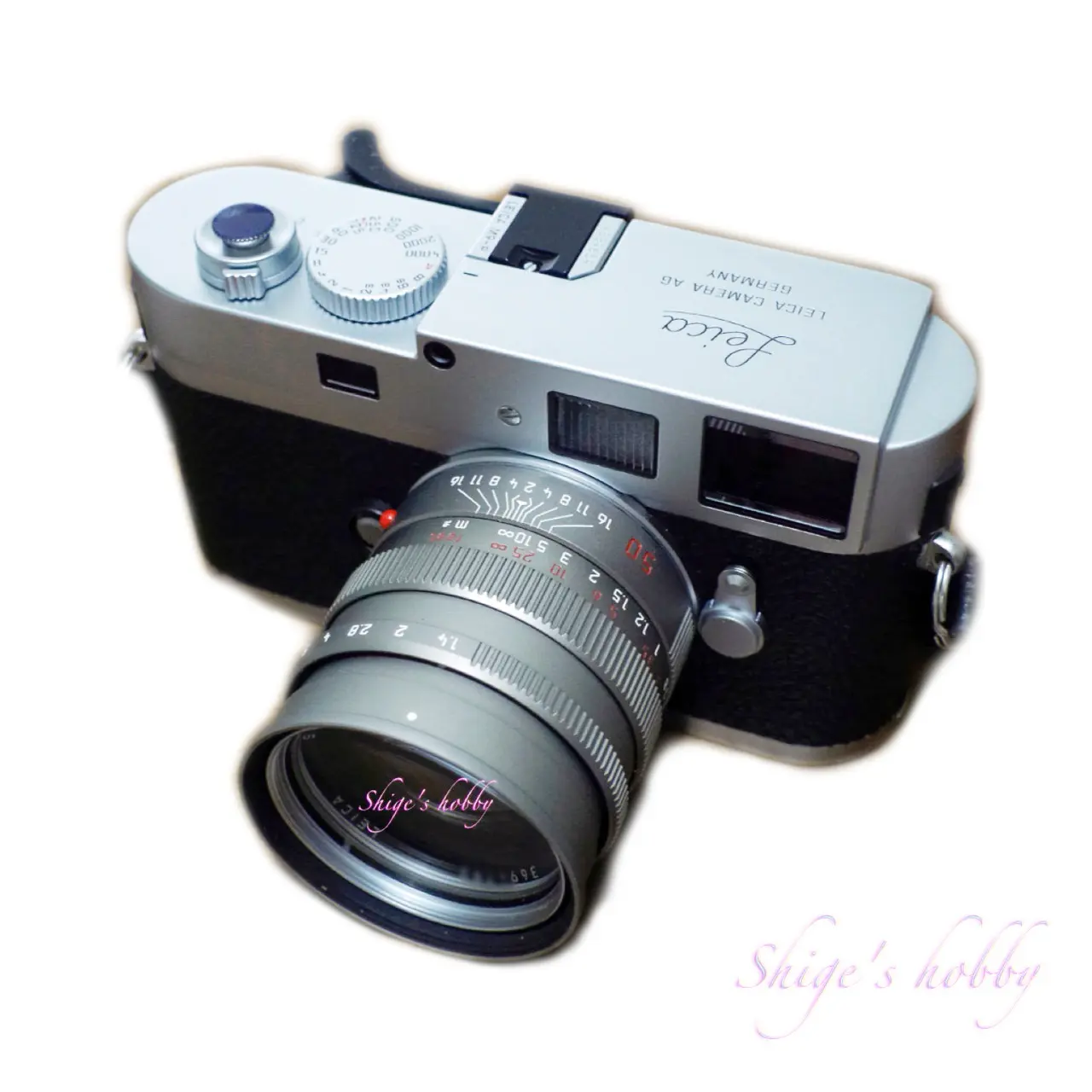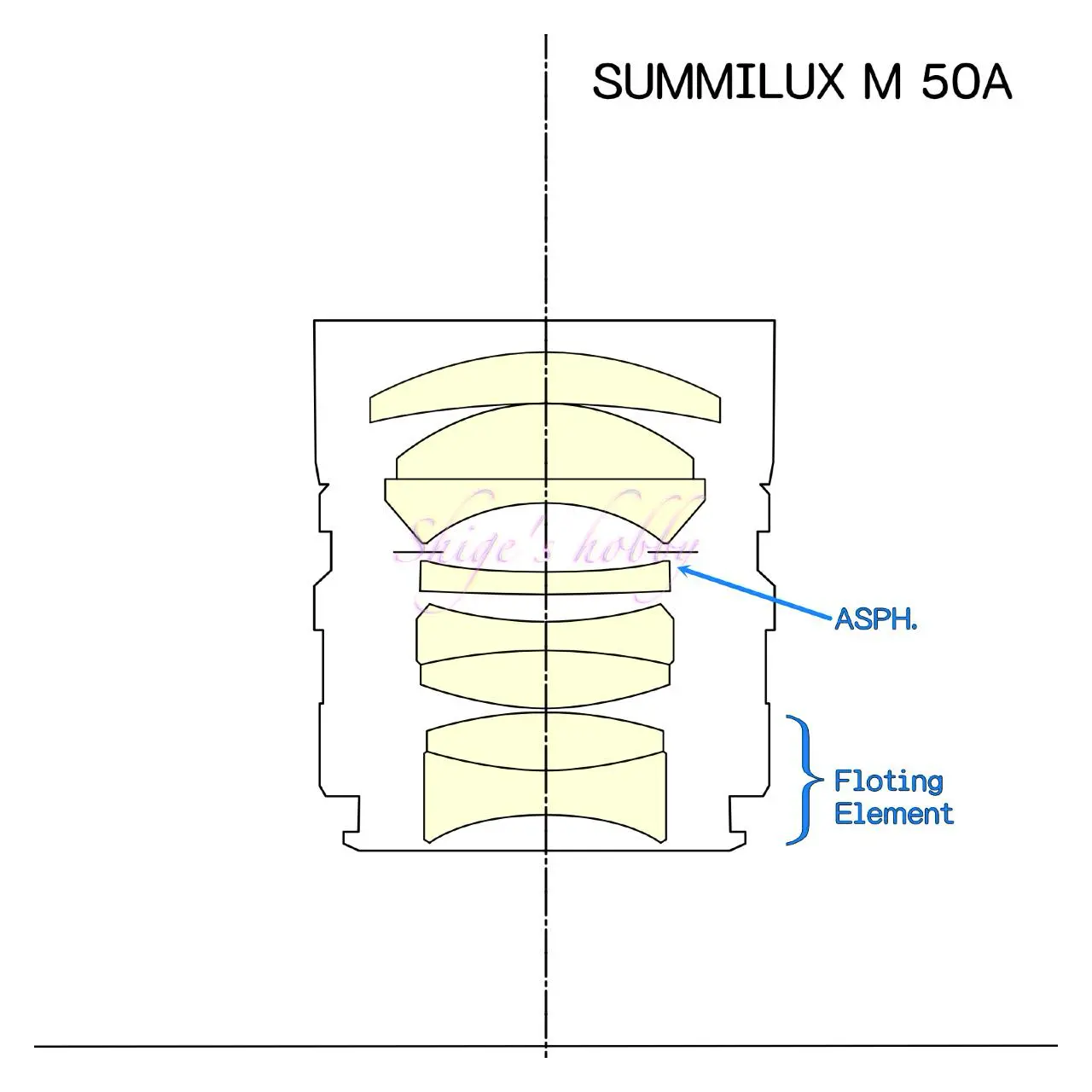Last updated on 2025-05-04
A review and Photo example of the Leica SUMMILUX M 50mm F1.4 3rd(Titan color) with LEICA M9.
Table of contents

Gallery
- The sample photos were taken with a LEICA M9.
Review


1.Overview
The third-generation Summilux M 50mm is a standard lens for the Leica M mount. 18,132 were produced between 1992 and 2006.
It has an amber lens coating, and has a simple cylindrical lens barrel with no bumps, which has been continued since the first generation, and a minimalist design with a built-in hood.
There are many color variations, including black, silver, titanium, and black paint. The black paint version is limited and has a different design for the focus ring, etc. The built-in hood, which is a design feature, is only slightly longer than the original LEICA 46mm lens filter even when pulled out.
The third-generation Summilux 50mm is available in M mount and L39 screw mount, and the minimum shooting distance of the M mount version has been changed to 0.7m. Because the mount shape is new, it is possible to officially modify it by adding a 6-bit code for lens recognition.
The L39 screw mount version is a limited edition model in silver, and the minimum shooting distance is limited to 1m, just like the second generation, which matches the minimum shooting distance of the Barnack Leica equipped with the L39 screw mount.
Photographers who prefer a shorter minimum shooting distance should take note when purchasing.
2.Usability
The third generation SUMMILUX M 50mm is composed of only spherical lenses, and the depiction tendency is not as sharp as the fourth generation, which uses aspherical lenses. However, compared to the older first and second generation SUMMILUX, it is clear and clear, and the depiction is preferable because the focus position is not too sharp.
Even when I tried to focus using the M-type rangefinder at full aperture, the focus position in the result was often shifted from the intended point. This is a problem on the photographer’s side, and I think it is caused by the fact that the shift cannot be corrected when shifting the composition after focusing with a double image at full aperture. It is necessary to use it and understand the shift before shooting. If the angle does not change significantly when shifting the composition when stopping down to around F4, there will be no problem with the focus position.
The focus ring feels light when turning, and I don’t know if this is appropriate or due to loss of grease.
The built-in lens hood is not long enough to be practical even when pulled out, and it has low light blocking properties, so it was rarely used extended. If I were to praise this small hood, it would be that because of its length it doesn’t get in the way of the viewfinder window.
Given the year of manufacture, I would guess that advances in lens coating have made the lens more resistant to backlight, which is why this hood is more of an added extra.
The amber coating that is visible when held up to the light is beautiful. It seems to be a coating color unique to this era, and the R-mount Summilux lens I own with a filter diameter of 55mm (E55 type) manufactured in 1989 appears to have the same coating color.
3.Summary
In conclusion, to sum up the third-generation SUMMILUX 50mm, its characteristic is that it does not require the sharpness of the SUMMILUX that uses aspherical lenses, and it offers a gentle depiction. The minimum shooting distance has been shortened to 0.7m, improving versatility when shooting.
It has no focus lever and a simple design with few bumps and grooves, so if that’s what you like, this is a lens to consider when choosing a bright standard lens.
About titanium color
Leica has released many titanium colored products, and this Summilux 50mm is one of them.
M-mount titanium colored lenses include the Summicron 35mm F2 ASPH., Summicron 50mm IV, Summicron 90mm, Elmarit 90mm, Summilux 50mm III, Summilux 35mm (spherical), Summilux 35mm ASPH., and APO-Summicron 90mm ASPH. Some lenses are expensive because they are produced in small numbers.
The above lenses are painted titanium color, and there are special models of the Leica M7 and M9 that use titanium instead of paint. The included lenses are also very expensive because they use titanium.
I had three titanium colored lenses, the Summilux 35mm (spherical), the Summilux 35mm ASPH., and the third generation Summilux 50mm, and a film camera, the LEICA M6.
I bought these titanium-colored Leicas as a set: the LEICA M6, Summilux-M 35mm ASPH., and the third-generation Summilux-M 50mm. I remember buying them about 20 years ago, when the camera store I bought them from had a lot of stock and gave them to me at a very low price. In the 2020s, they are all quite expensive, so it seems difficult to buy them again.
There is a fair chance of seeing cloudy M-mount lenses of the same era, including this lens, on the used market.
It is possible that the type of glass and balsam material are prone to clouding depending on the storage conditions, so care should be taken when purchasing.
Specification and Competitor
Comparing the 3rd generation SUMMILUX with the aspherical SUMMILUX, you can see how compact the 3rd generation is. You can also see how the aspherical version is heavier and larger.


| Items | SUMMILUX-3rd | SUMMILUX M 50ASPH. |
| focal length(mm) | 50 | 50 |
| Maximum aperture | 1.4 | 1.4 |
| Minimum aperture | 16 | 16 |
| Leaf blade | 5群7枚 | 9 |
| Lens configuration | 16 | 5群8枚 |
| Minimum distance(m) | 0.7 | 0.7 |
| Lens length(mm) | 46.7 | 52.5 |
| Lens max diameter(mm) | 54.5 | 53.5 |
| Filter type | E46 | 46 |
| Weight(g) | 組込 | 組込 |
| Hood | 275(Black) 380(Silver / Titan) | 335(Black) 460(Silver) |
| Lens mount | M | M |
| Release date | 1992~2006 | 2006~ |
| Production numbers | 18,132 | – |
Reference links
- Leica Wiki 「SUMMILUX 1.4/50-3rd」
- SUMMILUX M 50ASPH.・Shige’s hobby
Update history
- 2025.4.29
- 2024.11.4
- 2024.03.11
- 2023.04.14
Affiliate links
- Some external links are advertisements and clicking them may generate income for the site administrator.


Be First to Comment